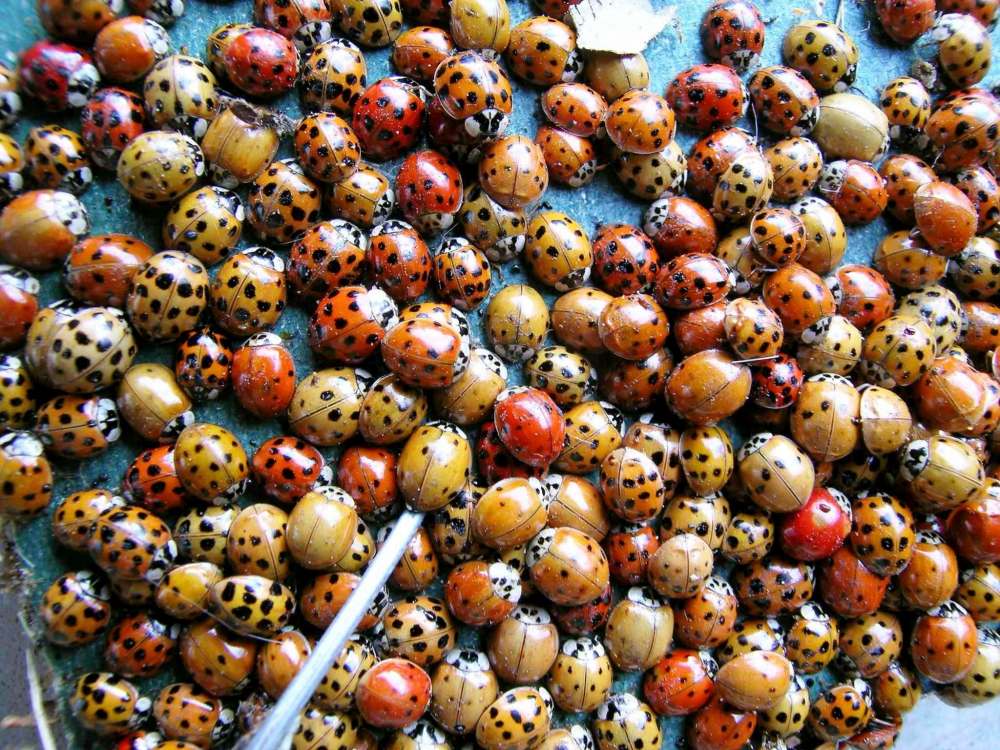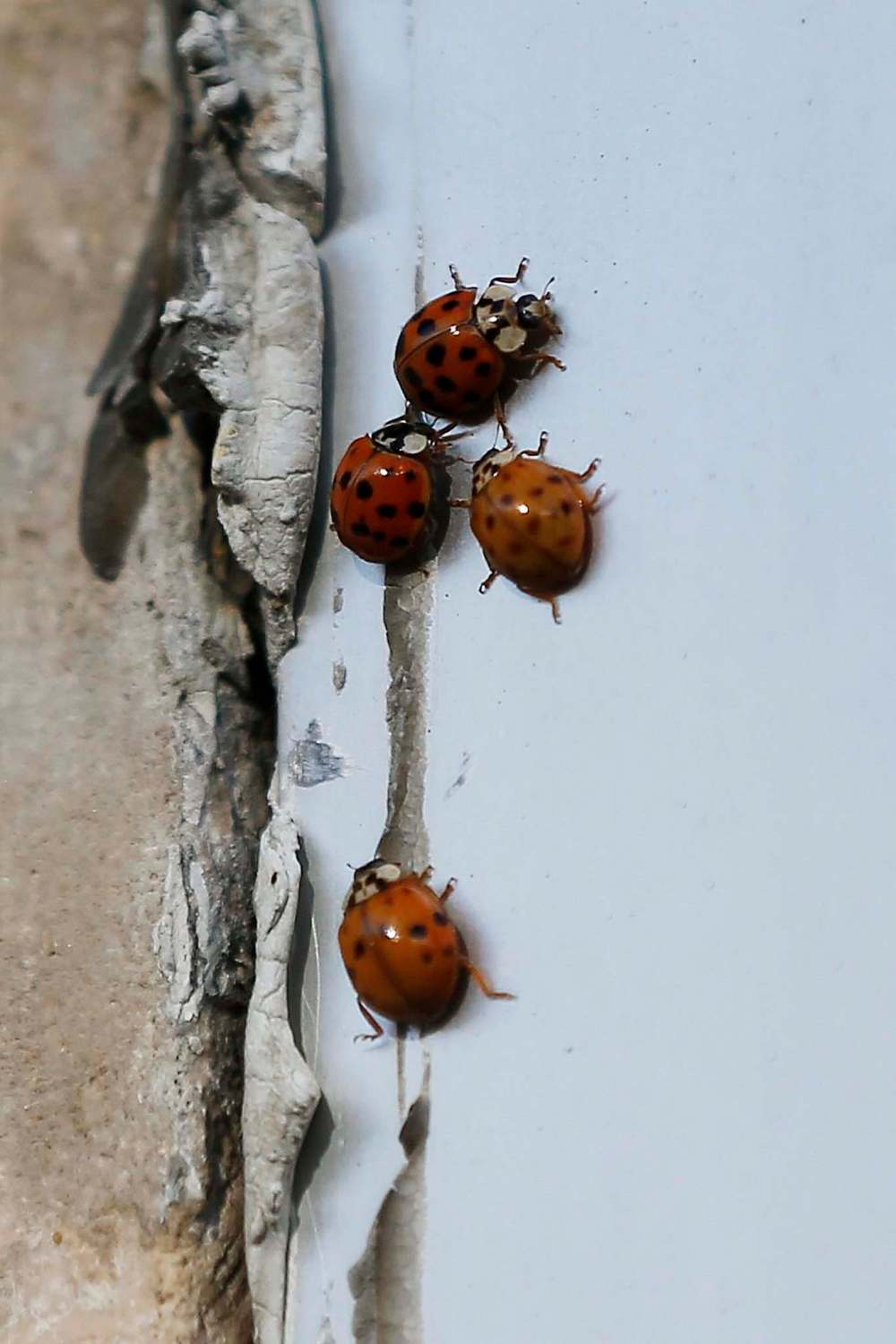Beware the kiss of the lady beetle
Biting insects swarm province
Advertisement
Read this article for free:
or
Already have an account? Log in here »
To continue reading, please subscribe:
Monthly Digital Subscription
$0 for the first 4 weeks*
- Enjoy unlimited reading on winnipegfreepress.com
- Read the E-Edition, our digital replica newspaper
- Access News Break, our award-winning app
- Play interactive puzzles
*No charge for 4 weeks then price increases to the regular rate of $19.95 plus GST every four weeks. Offer available to new and qualified returning subscribers only. Cancel any time.
Monthly Digital Subscription
$4.99/week*
- Enjoy unlimited reading on winnipegfreepress.com
- Read the E-Edition, our digital replica newspaper
- Access News Break, our award-winning app
- Play interactive puzzles
*Billed as $19.95 plus GST every four weeks. Cancel any time.
To continue reading, please subscribe:
Add Free Press access to your Brandon Sun subscription for only an additional
$1 for the first 4 weeks*
*Your next subscription payment will increase by $1.00 and you will be charged $16.99 plus GST for four weeks. After four weeks, your payment will increase to $23.99 plus GST every four weeks.
Read unlimited articles for free today:
or
Already have an account? Log in here »
Hey there, time traveller!
This article was published 16/10/2017 (3009 days ago), so information in it may no longer be current.
People try to kill most any insect that lands on them or that gets into their house, but not the lady beetle.
It’s too cute. People are more apt to blow it off, or carry it outside and set it free. Youngsters might give it a home in a jar, along with a few leaves and maybe a name.
However, the number of Asian lady beetles has rocketed this year. Manitobans are starting to take another look at them — and not just to count their spots.
“There’s quite a big population this year and they’re quite widespread,” Manitoba Agriculture entomologist John Gavloski said. “People are writing or calling from across the province because they’re getting into houses in big numbers.”
Some rural residents are reporting large clusters of lady beetles numbering in the hundreds or thousands in garages or attics, and having to shovel them out.
There are 66 types of lady beetles in Manitoba, experts said.
In the 1990s, multicoloured Asian lady beetles arrived in North America via an ocean liner. Manitobans are seeing them now, in colours ranging from yellow-orange to red, with zero to 19 spots — and they’re the biters.
“It feels like a pinch,” Gavloski said. “I think they’re looking for salt.”

It is the Asian lady beetle gathering in swarms inside local buildings. Other species of lady beetles will overwinter under leaves or in a sidewalk crack, but the Asian version is used to hibernating in sheltered cliffs. They will fly high trying to find shelter — be it in an apartment tower or an attic.
The Asian lady beetle also releases a yellow, smelly secretion people often mistake for insect urine. It’s actually blood it oozes out of its joints to give a sour odour and taste to ward off predators.
The University of Manitoba bug line has also lit up with more than the usual complement of questions about lady beetles, said Jordan Bannerman, an entomology instructor.

“Most ask how to get rid of them,” he said. “People are certainly noticing how abundant they are. I get questions on if they can bite. (Some species do.) Also, people are just concerned because they can be quite smelly.”
Fellow U of M entomologist Kateryn Rochon has had lady beetles cling to the outside windows of her 26th-floor apartment this year. “It drives my cat insane. My cat throws herself at the window trying to catch the beetles.”
It’s been a great year for lady beetles because it’s been a great year for aphids. Female lady beetles can eat up to 95 aphids a day, while adult males eat about 50.
Lady beetles also like to consume insect eggs and other insects such as the European corn borer. It’s why farmers usually love lady beetles, as they protect crops.
“We know some farmers were holding off pesticides because they noticed a high number of lady beetles,” Gavloski said.
Lady beetles have been used for biological pest-control for many years. Non-native lady beetles were first imported to California from either Australia or New Zealand in the 1880s to control aphids on citrus groves, Gavloski said. It hasn’t always worked out, as lady beetle numbers have turned into infestations in some places.
Lady beetles tend to swarm in September and October, and with most of the crops off fields now, lady beetles, in general, are migrating, looking for an aphid supplement and a winter hideaway, said Gavloski.
To keep out lady beetles, seal any gaps or cracks around doors, windows and similar areas, and cover dryer vents, especially on the sunny southwest side of buildings.
Gavloski expects Manitobans will be dealing with large numbers of lady beetles until the end of October, judging by the weather forecasts.
Lady beetles don’t start bedding down until temperatures are consistently below 10 C, he said. There typically is a high rate of winter kill.
bill.redekop@freepress.mb.ca
History
Updated on Tuesday, October 17, 2017 10:46 AM CDT: Adds images


